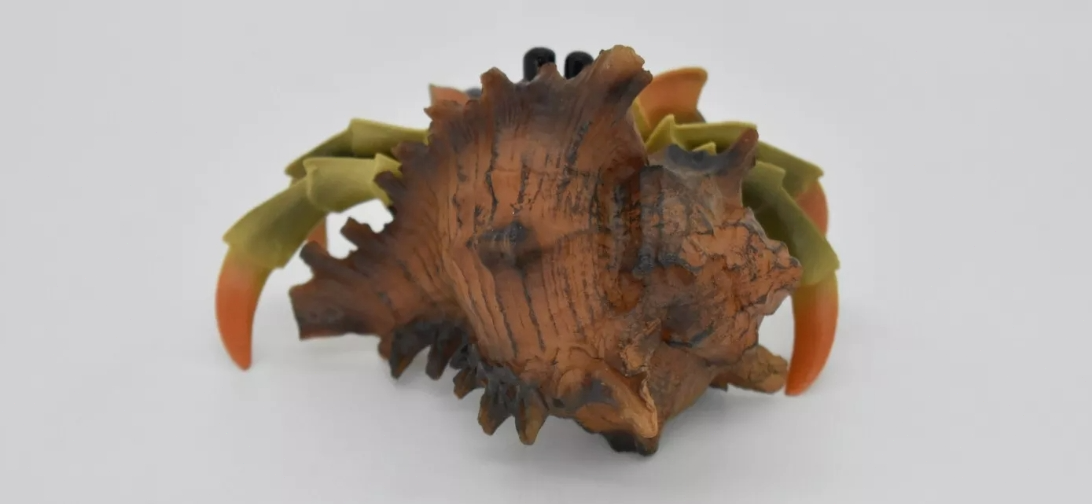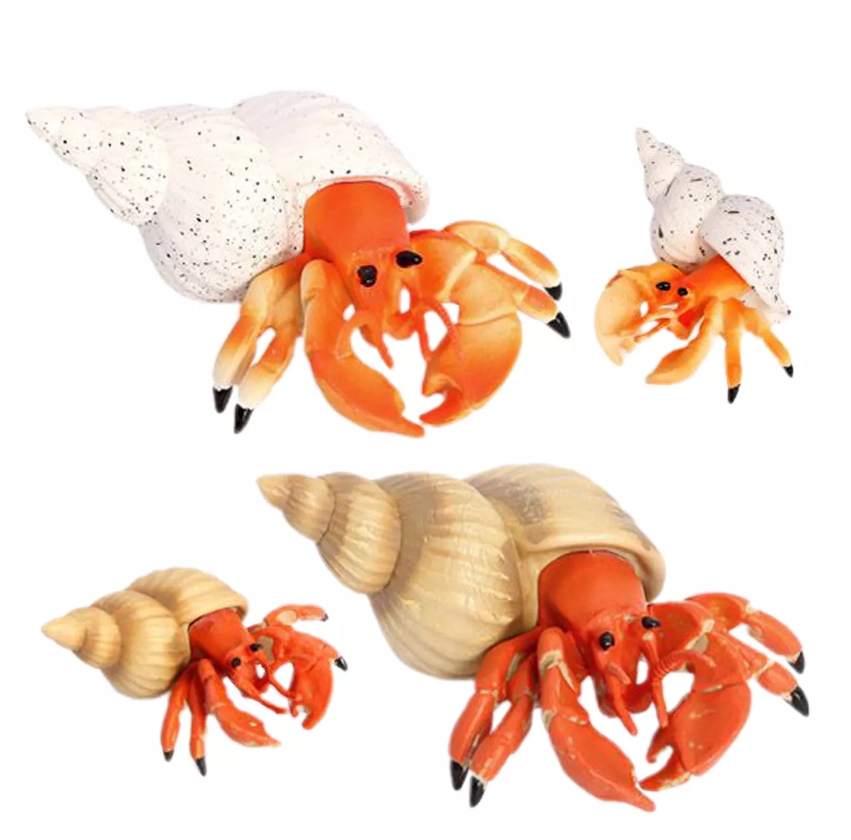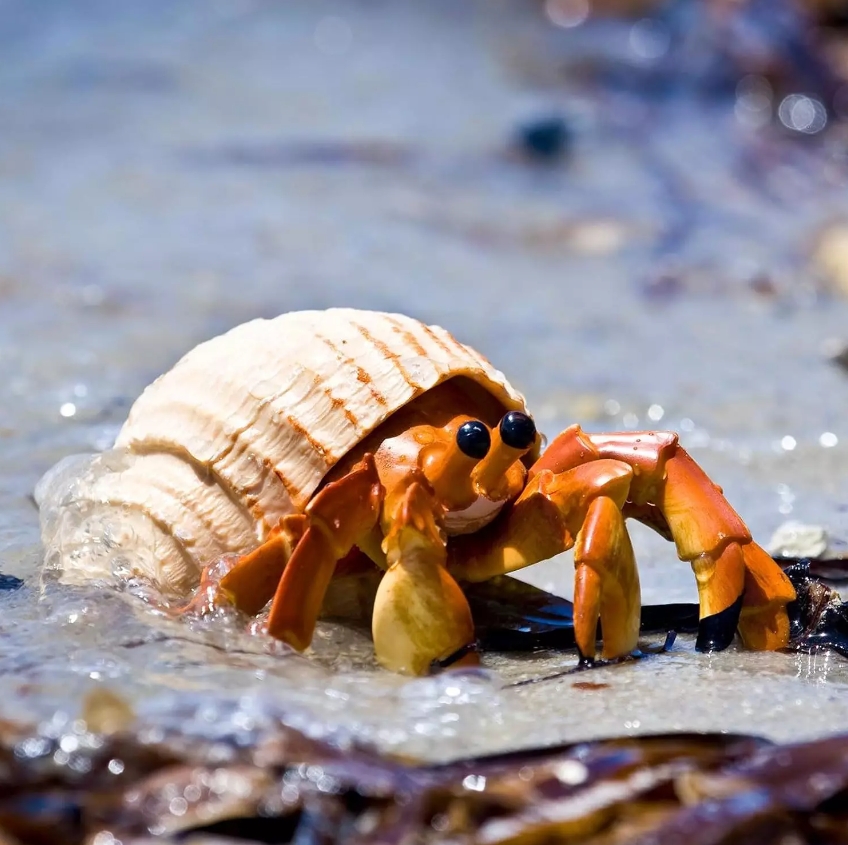Hermit crabs are unique creatures known for their flexible survival strategies and adaptability. They often live in the shells of other Marine creatures, a behavior known as "sojourning." The study of hermit crab models can give us a deeper understanding of their ecological habits and their role in Marine ecosystems.
The core of its survival strategy is to choose a suitable shell. Hermit crabs typically seek out empty shells, relying on them to protect themselves from predators. The selection of the shell is not only a matter of matching the body type, but also involves many factors such as the weight, shape and material of the shell. This selection process reflects the adaptability of hermit crabs, which show different selection tendencies under different environments and competitive pressures.
Social behavior also plays an important role in the hermit crab model. Hermit crabs often exhibit some sociality, interacting in shell exchange and competition. When a hermit crab finds a larger shell, it may trigger the attention of those around it, leading to a series of shell exchanges. This behavior not only enhances the interaction between groups, but also promotes the rational use of resources, enabling individuals to better adapt to environmental changes.
In addition, the significance of the hermit crab model in ecology cannot be ignored. With their ability to influence the material circulation of their habitat, for example through benthic predation and shell use, hermit crabs play an important role in ecosystems. Their activities can promote the recycling of nutrients and change the underlying environment, which in turn affects the survival of other organisms.
In summary, the hermit crab model demonstrates the complex behavior of organisms in natural selection and resource utilization. The study of this unique organism can inspire us to better understand the dynamics of ecosystem changes.




